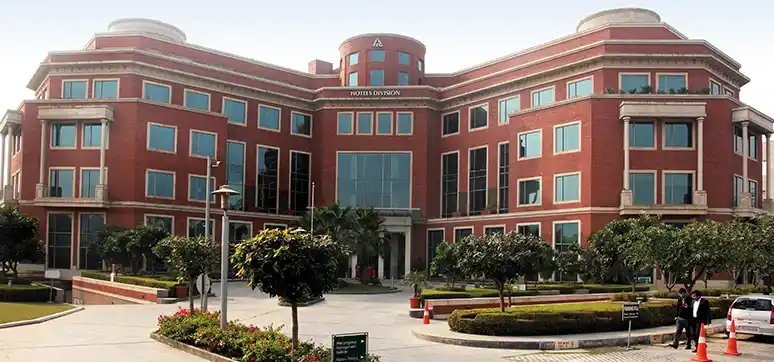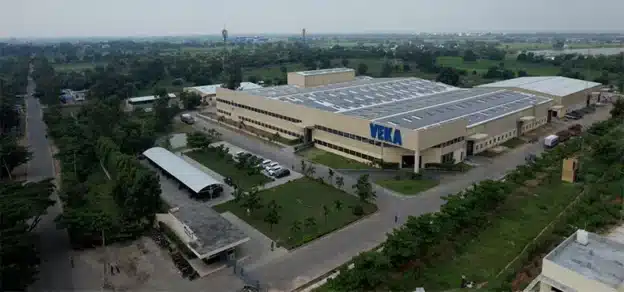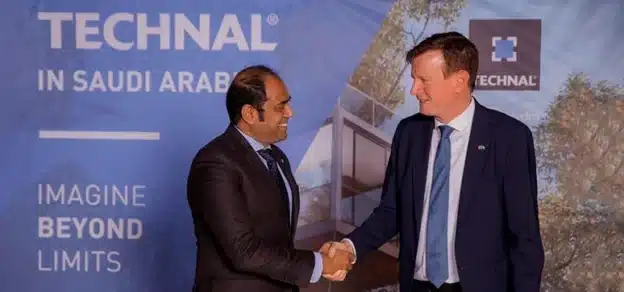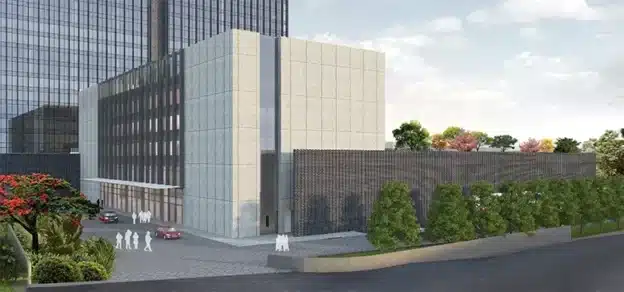The building industry consumes maximum fossil fuels and contributes most to global warming. Over usage of conventional building materials not only causes global warming but also adversely affects natural resources. The façade is one of the most important contributors to the energy consumption and comfort parameters of any building. So the use of efficient façade material has a big role in optimising the requirement of operational energy and other functional parameters desired in buildings.
This paper presents a unique building material named Autoclaved Aerated Concrete (AAC). AAC is a building material which consists of various sized elements that form a complete building system. E.g., walling blocks, reinforced wall & roof panels can be made out of AAC. AAC is also recognised as a Green building material and is used commonly for the buildings conforming to TERI–GRIHA, ECBC and IGBC–LEED rating systems. No other single building material can provide such a wide range of benefits like lightweight, thermal insulation, high productivity, increased carpet area, etc. offered by AAC.

With the increase in housing demand, the use of sustainable green building materials has become a necessity. The benefit of using Green materials are generally expressed under three broad categories, i.e., environmental, economic, and health safety benefits. AAC materials provide all these benefits to the users. AAC has been utilised as a building material throughout the world for more than 80 years. It was developed during the early 1920s at the Technical College in Stockholm, Sweden.
Since then, it has been used commercially in the construction of industrial, institutional and residential structures throughout the world. In India, AAC has its presence for last more than 40 years. Government PSU M/s Hindustan Prefab Limited (HPL), known to be the first in India to produce AAC and subsequently various companies like Biltech Building Elements Ltd., Ultratech, JK, HIL, et.al has also started manufacturing AAC. At present, there will be more than 100 units (in different capacities) producing AAC in India.
PRODUCTION:

AAC is manufactured using various raw materials – ground silica sand or fly-ash, quicklime, cement, gypsum, and aluminium powder. Input materials are tested, graded and weighed as per process requirements and then conveyed in a programmed sequence into a batch mixer. This mixture is poured into huge moulds of appx. 6 m in length. In the mould the raw material mix in slurry form is allowed to rise and set. The material in the green stage is then trimmed and cut to shape and size and loaded into autoclaves. In the autoclaves, the material is steamed at 11 bar and temperature of appx.180°C for 8 hours. Once autoclaving is over, the material is unloaded, palletised and sent for dispatch.
TECHNICAL SPECIFICATIONS:
RELEVANT BIS STANDARDS:
BIS – 2185 (III) – 1984: Specification of AAC block
BIS – 6041 – 1985: Construction of AAC block masonry
BIS – 6072 & 6073: Specification of AAC-reinforced products
BIS – 6441 – 1972: Methods of test for autoclaved cellular concrete product
Benefits of AAC Blocks AS Walling Material:
-
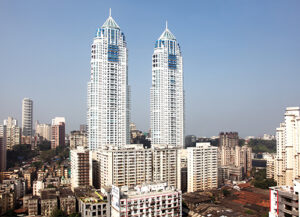
A high-rise building in Mumbai for SD Corporation Pvt Ltd. Structural saving: The oven dry density of AAC varies from 450 -650 kg/cum. While compared with conventional materials AAC induces one-half to one-third less dead load in the structures resulting in substantial savings in the structural cost.
- Speed in construction: AA-based systems shall provide better productivity and time benefits over conventional construction due to a reduction in the number of joints in the wall masonry and avoidance of any shuttering for flooring jobs. AAC-based systems also require almost nothing pre-curing and post-curing activity.
- Operation & maintenance benefits: AAC-based systems shall provide a major saving in energy costs due to reduced air-conditioning load vis-à-vis conventional construction. The thermal conductivity of AAC material is on an average of 0.16 W/ MK which is 4-5 times better than concrete and clay products
- Transportation benefits: Because of lesser dead load, more material can be shipped in a single trip i.e., 9 M Ton capacity truck can carry 12 cum of AAC Block in comparison to 5 cum of clay bricks.
AAC AS Green Building Material:
AAC reduces environmental impact considerably during manufacturing and construction stages.
AAC products are considered “Green building material” because of the following features:
- Raw materials consist of recycled industrial waste – Up to 60% of the raw materials used in AAC manufacturing process is industrial waste i.e. Fly ash.
- Non-polluting manufacture – Autoclaved aerated concrete manufacturing is a closed-loop process. Clean steam is only released into the atmosphere.
- Resource efficiency – The end product approximately contains 80% of pores and 20% mass. Thus 5 parts AAC are produced from just 1 part of raw materials.
- Low energy consumption throughout the life cycle – The total energy consumption to produce AAC is 1/3rd of that of many comparable building materials.
- Healthier indoor air quality – AAC products do not offgas and do not promote the growth of mildew and mold.
AAC’S Contribution in TERI GRIHA & IGBC LEED Ratings
AAC blocks qualify for Green ratings because of the following attributes:
- Minimum use of water during construction – lesser prewetting and post-curing
- Reduces energy load – because of high thermal insulation properties
- Less embodied energy – Waste content (Fly ash) is 55- 60%
- Regional material – Availability of AAC within 500 km
- Indoor environment quality – NIL VOC
Use of AAC in ECBC Compliance Buildings
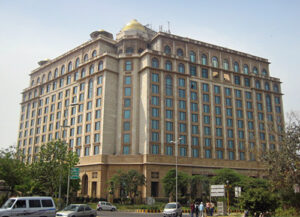
With the increase in electricity demand, conservation measures are required to be introduced and enforced to curtail the energy requirements in buildings. ECBC code of practice for energy conservation in buildings sets several requirements to limit the peak loads for space cooling. The enforcement of limits (voluntary) on the thermal resistance for exterior walls gave way to the introduction of AAC as an efficient material that can provide the requisite thermal Insulation without any other specific thermal insulating material.
AAC, being a lightweight material, provides useful thermal inertia because it possesses an advantageous combination of mass, thermal conductivity, and specific heat properties. Just for e.g, AAC blocks of 300mm thick with two coats of plaster offer thermal transmittance factors (U Value) of appx. 0.47 W/m2 k which is very close to the desired level.
CPWD Sustainability Index & Guideline for Materials
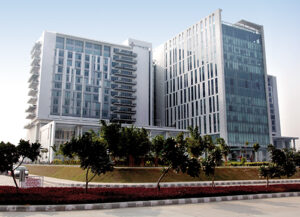
AAC meets favorably most of all the parameters mentioned below, desired in efficient building material.
Some of prestigious projects where AAC blocks have been used in huge volume for their construction are: Emmar MGF CWG Village at Delhi, ITC Office at Gurgram, Indira Paryavaran Bhavan at Delhi, WIPRO office at Gurugram, FORTIS hospital at Delhi, T3 – Airport in Delhi, SD Corpn in Mumbai, and various CPWD and PWD projects across India.
Conclusion:
While designing the façade of a building considering various functional aspects like stability, thermal insulation, durability, weathering resistance, workability is very important. The façade material has to perform in all types of climatic conditions throughout the life cycle of the building. AAC because of all its inherent properties and its excellent resource efficiencies will score very high over all other substitutes.

AAC has good workability and because of its large size/lesser joins ensures minimum thermal bridging affect which is a very important parameter while planning façade material. AAC integrates very efficiently with all other masonry products like thin bed joining mortar, rendering products like skim coat can be applied directly on AAC. All these Dry Mx materials are energy efficient and environment friendly. AAC has immense potential to become the most credible green and efficient façade building material.
